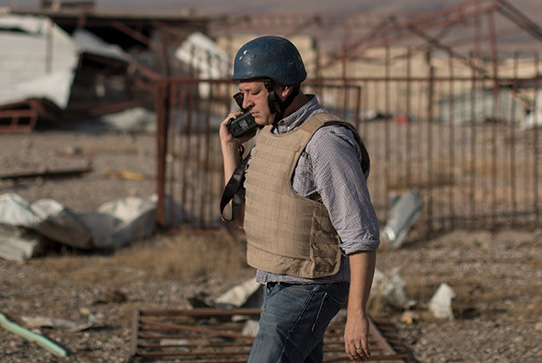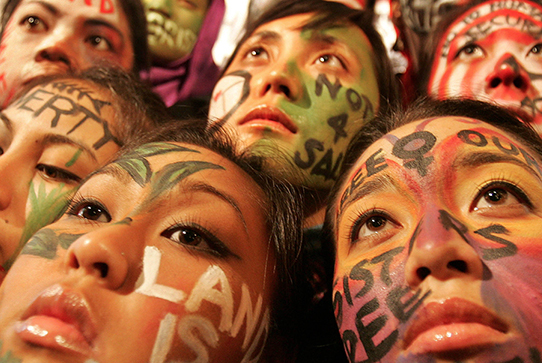Providing attribution
Anything in the AP news report that could reasonably be disputed should be attributed. We should give the full name of a source and as much information as needed to identify the source and explain why the person s credible. Where appropriate, include a source's age; title; name of company, organization or government department; and hometown. If we quote someone from a written document – a report, email or news release -- we should say so. Information taken from the internet must be vetted according to our standards of accuracy and attributed to the original source. File, library or archive photos, audio or videos must be identified as such. For lengthy stories, attribution can be contained in an extended editor's note detailing interviews, research and methodology.
ACCEPTABLE Editor’s note example 1
BEGGING FOR ISLAM
The account of Coli’s experience with the Islamic school is based largely on interviews with the boy himself. Much of the account was confirmed in multiple interviews with rescue workers, Coli’s mother, his brother and his former marabout. To report on Coli’s rescue and return home, an AP reporter and photographer visited the school and the shelter, accompanied Coli on the trip to Guinea- Bissau, and waited with him until his mother arrived.
ACCEPTABLE Editor’s note example 2
Editor's note — Pat Valdes' criminal history comes from interviews with INS investigator David Fry, Border Patrol agent Rudy Valdez, other investigators, and prosecutors, as well as from interviews with and letters from Valdes. Details of the investigation come from those sources and from court records and trial testimony. Details of Roman Valdes' 1999 and 2002 interrogations and of Pat Valdes' 2002 arrest come from Border Patrol videotapes and interviews with agents. Scenes from Pat Valdes' trial are from trial transcripts and interviews with a juror, investigators, and prosecutors Tom Roepke and Greg McDonald. Details of the truck drivers' sentencing are from court transcripts, interviews with prosecutors, and the reporter's observations.
In other cases, especially with state-by-state packages, we write a separate, extensive note on our methodology. This is an example:
SCHOOLHOUSE SEX ASSAULT
Sexual assault on college campuses has made headlines for years, but The Associated Press sought to determine whether it also is a problem among younger students and, if so, to what extent.
There are no federal requirements for elementary and secondary schools to report such assaults and academic research aimed at quantifying the number of assaults at schools throughout the U.S. has been based only on sample surveys.
The AP sent queries to public education departments in every state and the District of Columbia for all available years of statistics on sexual assaults by students. Ultimately, AP compared states across a four-year period — academic years 2011-2012 through 2014-2015 — the time frame with the most consistent reporting.
AP counted only those cases that met the federal government's definition of sexual assault — "any type of sexual contact or behavior that occurs without the explicit consent of the recipient" — including forced sexual intercourse or sodomy, fondling and attempted rape. Excluded were minor incidents that might have resulted from childish misunderstandings and overly broad categories like sexual harassment or bullying, which included non-physical incidents or did not specify instances of sexual assault.
The education data included sexual assaults by students that led to discipline, as well as those that did not, and reflected offenses that occurred on school property or at school-sponsored events.
Few states kept information on victims, but data from states that tracked both showed the vast majority of student sexual attacks were against other students.
For states with no education data, AP looked to the National Incident-Based Reporting System, a voluntary network of official crime reports from participating states. AP used the two most recent publicly available years of NIBRS data (2013-2014) and filtered it for incidents at schools, both public and private.
The incidents counted were limited to only those occurring at an elementary or secondary school involving sexual assault codes for rape, sodomy, penetration with an object or unwanted fondling. Cases of statutory rape and consensual underage sex were excluded.
Incidents were further limited to only those involving victims and perpetrators between five and 19, the age group most likely falling into the K-12 student body. Cases without a known perpetrator — or cases where either the perpetrator's or victim's age was not provided — were excluded.
While AP's accounting of schoolhouse sexual assault is a first of its kind, the number surely is an undercount because of missing and inconsistent data and a lack of oversight by states or the federal government.



